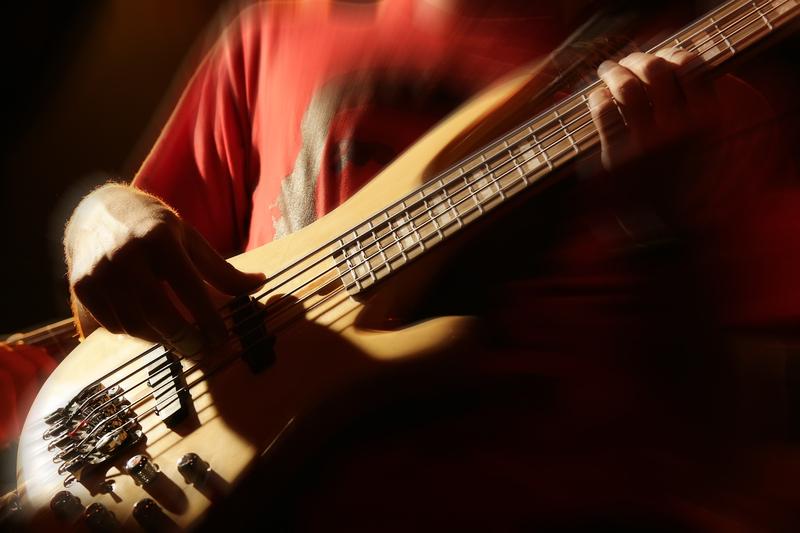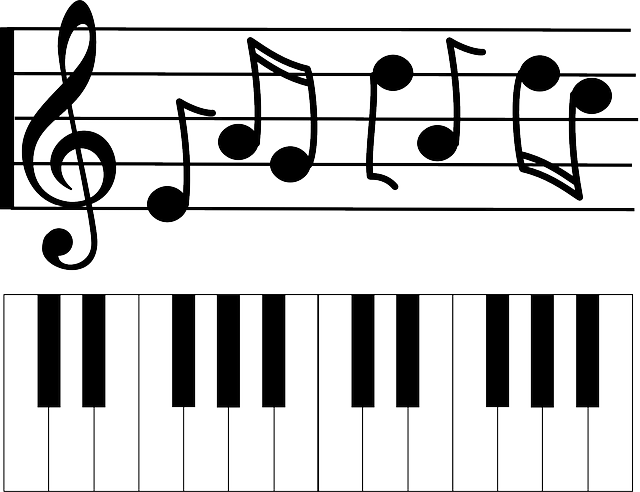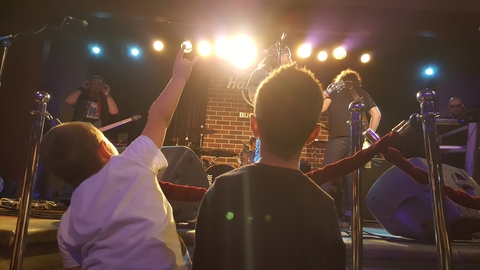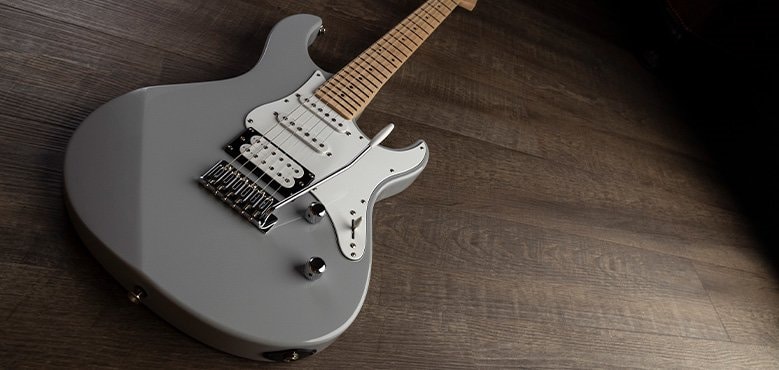Bass Tabs: The Ultimate Guide for Beginners

Bass Tabs: The Ultimate Guide for Beginners
Learning to read bass tabs is fundamental to becoming a better bass player. Understanding bass tablature—commonly called bass tabs—will help you sharpen your listening skills, learn new techniques, and help you play your favourite songs.
Musicians have used tabs for years. During the Renaissance, lute players used tabs to play and write down songs. As history has progressed, other instruments have incorporated tabs to create badass music—including bass guitars and guitars.
So, how do you learn to read bass tablature? We’ll tell you in this article. But first, let’s look at the bass guitar and why tabs are so important:
What Is a Bass Guitar?
The bass guitar is a critical instrument in the creation of music. A bass guitar creates the music’s undercurrent—or the bass line—which brings the rhythm and melody together.
Unfortunately, the bass guitar doesn’t always receive the credit it deserves. That’s because it’s a low-pitched instrument that provides simple—yet extremely creative—riffs. As a result, most people don’t know or appreciate how powerful the bass guitar is.
However, whenever someone is bobbing their head to the music—they’re most definitely bobbing their head to the bass line. Without a great bass line, most of your favourite songs would never have made it out of the recording studio.
Why You Should Learn Bass Guitar
Millions of people want to learn how to play stringed instruments. For most, the guitar is the best option because it’s popular and has the ‘cool element.’ After all, can you name many famous bass players?
Sure, there are a few—such as Paul McCartney and John Paul Jones—but it’s fewer than the guitar. Famous guitar players include Brian May, Slash, Jimmy Hendrix, Jimmy Page, Noel Gallagher, and Keith Richards.
Bass players don’t get the same mainstream recognition (although they’re loved by the hardcore fans). Some famous guitarists, such as George Harrison and Eddie Van Halen, often played bass and guitar.
The Benefits of Learning Bass
1. Bass Makes You a Better Musician
It doesn’t matter whether the bass guitar is your first instrument or one of many, it will make you a better, more rounded musician.
2. There Are Far Fewer Bass Guitarists
There are fewer bass players in the world. As a result, not only do you have more chances to earn money as a musician, but you also have a better chance of rising to the top.
3. Bass Playing Builds Dexterity
Learning to play the bass guitar is an excellent way to improve your dexterity. Whether you’re playing fingerstyle, slapping, or playing with a pick—you can use these skills on other instruments.
4. Learning To Play Bass Boosts Your Memory
Learning a musical instrument is excellent for developing your memory skills. In addition, learning bass guitar is excellent for learning songs, chord shapes, and theoretical knowledge of music.
5. Bass Guitar Is an Excellent Creative Outlet
If you’re looking for an incredible creative outlet, look no further than the bass guitar. Some of the best bass lines are the most creative.
6. You Can Learn To Play The Guitar
Once you’ve learnt how to play bass, you can use these skills to learn the guitar. Sure, the two instruments are different and don’t have the same notes—but you’re at an advantage if you’re already a bassist.
How To Read Bass Tabs
So let’s begin learning how to read bass tabs. You can find bass tabs in music books, magazines, and all over Google; they’re simple notations for bass guitars. Remember, learning to play bass tabs is only a small fraction of becoming a great bass guitarist.
Bass Strings
Bass tabs show the strings of a bass guitar drawn horizontally. In most cases, musicians write bass tabs for a 4-string guitar, but you may also see bass tabs for 5 and 6-string guitars. However, that depends on whether the song requires more strings to play the song.
The bass strings are written with the lowest-pitched string (the fastest) at the bottom of the tabs. Standard tuning is from lowest to highest, unless the song demands otherwise, and is E-A-D-G.
Some songs will require different tuning or more strings. Yet, when you’re a beginner, it’s best to start with the standard tuning.
Fret Numbers
Most numbers are indicated by fret numbers in bass tabs. You can find the fret number on the string on which it’s played. Most bass guitars have between 20 and 24 frets, and you may witness fret numbers from 0 (which is the open string) right up to 24.
Bars
You’ll notice bars within the bass tab. These tell you when the count starts over; they’re marked in a standard notation with a vertical byline.
Rhythm
The bass tab usually doesn’t indicate the rhythm of a song. You can only see the order of the notes. In this case, you must listen to the recording and piece together the song’s rhythm yourself. Is that easy? Not at first, but practice makes perfect.
Sometimes, however, you’ll see rhythm marked underneath the bass tab. That can be extremely helpful when you’re uncertain about a song’s rhythm.
Other Markings
You may find other markings on bass tabs that indicate the way you should play the notes. However, these are not standard and you may see different variations.
Here are some of the common bass tab makings your may witness:
- A forward slash ( / ) means a slide moving up in pitch.
- A backslash ( \ ) shows a slide moving down in pitch.
- A caret (^) shows a bend.
- An X (x) means a ghost note.
- An H (h) suggests a hammer-on.
- A P (p) shows a pull-off.
In addition, you may see these marking beneath the strings:
- An S shows a thumb slap.
- A P means a pop.
- A T shows a tap.
Altered Bass Tunings
You may come across altered bass tunings on a bass tab. It may tell you to change the tuning of your bass for something that’s not standard. For example, the tab may say DADG or Db-Ab-Db-Gb. In most cases, they are written from low-string to high-string.
Is It Hard To Read Bass Tabs?
No.
Reading bass tabs is relatively simple. You only need to learn the fret numbers on the string line. Bass tabs are incredible for helping beginner bass players before they can read standard music notation and bass notes on the fretboard.
Bass tabs are also superb for helping you with complicated finger strings alongside standard notation.
The Best Bass Riff for Beginners
When you’re learning to read bass tabs, it’s essential to practice with some of the best songs. There are many easy songs you can learn from. Some of the following bass riffs you’ll be able to play straight away, whereas other riffs may require you some practice. Check out our Easy bass guitar tunes article with more info and YouTube videos.
Either way, here is a list of the best riffs:
Seven Nation Army – The White Stripes
Seven Nation Army has one of the most notorious and noticeable bass lines ever. Sporting fans worldwide will create chants based on the iconic bass line. Here’s the good news about this riff: it’s an easy bass line to read, learn, and play!
Interestingly, The White Stripes never had a bass guitarist and the song didn’t use a bass guitar. Instead, the band’s guitarist, Jack White, used a DigiTech Whammy Pedal to pitch-shift his guitar down by an octave—making his guitar sound like a bass guitar. However, not many people know this.
When you play this guitar riff, consider which fingers make sense for each note. For example, what’s the best note to make it easier to play the 10th fret note? Experiment with your fingers to find the most comfortable option.
It’s best to practice this bass guitar riff with a metronome (120 bpm). You can also learn on a drum machine that you’ve set to a quarter-note drum bass pattern (same as the song). It was the song’s pumping beat compared with the simple bass riff that made it so popular.
Feel Good Inc – The Gorillaz
Fronted by Damon Albarn—also the lead singer of Blur—The Gorillaz has many superb bass lines. However, perhaps their best bass line is Feel Good Inc. Not only is it incredibly catchy and iconic, but it’s also simple to learn. Paul Simonon, the bass player of The Clash, played this bass guitar riff for the band on this great song.
You should shift your bass up by an octave while keeping it in standard bass tuning when learning this riff. Listen closely to how long each note is held. At the end of the riff, some notes remain for most of the bar, whereas sometimes the last note ends by the next beat. Mastering how to hold a note is crucial to keeping a tight rhythm.
In addition, we recommend that you choose this riff if you’ve never tried changing your bass tuning before. You can use a tuner to tune down every string by a half-step. As a result, the E-string turned down to Eb (E-flat), etc. Some bands prefer Eb tuning to create a more aggressive, heavier tone.
You Really Got Me Going – The Kink’s
Without a doubt, You Really Got Me Going by The Kinks is one of the most incredible—yet easy to learn—bass lines ever created. If you’re only just starting, this riff is ideal for learning how to master timing and basic technique.
You’ll notice on the bass tab that this riff begins before the start of the bar. When you listen to the song, you’ll witness how the guitarist highlights the second note to match the start of the bar.
However, this bass riff is fast compared to many riffs (142 bpm). So, you’ll need to practice and gradually build up your tempo before you can truly play along with it. You can turn this great bass riff into a complete mess when you’re not ready to play at this tempo. You may use a metronome to practice at a slower pace until it becomes more straightforward.
Another One Bites the Dust – Queen
As far as legendary bands go, it’s hard to look past the brilliance of Queen. If you’re looking for a simple riff, it’s also hard to look past Another One Bites The Dust. The simple riff shows how rests can create a simple, yet tight, rhythm that generates a punchy sound.
You should listen carefully to this song before learning to play it. Also, take note of how long the notes ring before being muted. You can completely change the vibe of this riff by how long you let those three open strings ring.
You may notice that the tune of this simple riff is off when you play this song. That’s because the tuning of the instruments in this song is 1/4 pitch higher than normal. So don’t worry if your bass sounds a bit out. It’s the song and not your bass-playing skills. You can find pitch-corrected versions on YouTube though.
When learning this bass guitar riff, you should use a metronome or a drum machine to ensure you hit the timing of the first note of each bar spot right on the beat. You may learn some bad habits if you start learning this bass riff without a metronome. In addition, a drum machine will help you spot if your timing is poor.
Come As You Are – Nirvana
Nirvana created many fantastic bass guitar riffs—including Come As You Are and Smells Like Teen Spirit. However, as far as simple riffs go, Come As You Are is extremely easy to master. Most beginners can learn it straight away, which is always an incredible feeling.
The Come As You Are bass tab gives you fantastic practice at moving back and forth between two strings. Whether you pick or use your fingers, ensure the riff flows properly when you shift between the strings.
The band turned down the bass and guitar in this song to ‘D Standard’. Therefore, you should tune your E-string down to D, the A-string down to G, the D-string down to C, and the G-string down to F. However, you can play the song by tuning to Drop D Tuning (D-A-D-G).
Money – Pink Floyd
Pink Floyd created many sensational bass riffs. After all, they’re one of the most respected bands in history. Money by Pink Floyd is an excellent option if you’re learning to play bass. Although the iconic riff is in 7/4 time, you shouldn’t let that bother you because it’s a simple rhythm to master.
The first four notes of this may feel very awkward at first—but don’t worry. If you complete enough finger exercises, the awkward stretch will eventually ease. You should use a metronome or drum machine to get the most out of this guitar riff.
Another key element to learning this song is using the staccato right. You’ll begin to hear a bouncy feeling when you listen carefully due to the staccato used by the band. Therefore, this song is an excellent way to practice your staccato technique—a crucial technique to master on bass. If you play this riff without staccato, you’ll notice how the riff completely changes.
Livin’ on a Prayer – Bon Jovi
If you’re looking for a famous yet simple riff, look no further than the iconic Livin’ on a Prayer by Bon Jovi. For many beginners, it may feel like a tongue twister in your fingers. But don’t worry—this will improve quickly. Spend some time learning the order of the notes without the bass in your hand if you keep making mistakes.
You should think carefully about where you put your fingers when learning this riff. It may sound awkward when you increase the tempo if you’re not placing your fingers in the correct place.
For Whom the Bell Tolls – Metallica
Cliff Burton is one of the greatest bassists ever, and his riffs are always extremely fun to play. This riff will give you the excellent practice of playing the highest frets, which is something many newbies have tried before.
There’s a good chance the riff may be too complicated for you if you’re a beginner. But, if you have the time and want to excel quickly, it can be an incredible riff to learn.
The Best Ways To Practice Reading Bass Tab
When you’re new to playing bass, you’ll need to ensure you have excellent habits. It’s essential to have a solid routine to build proficiency and learn to read bass tab fast. Here are some important tips:
1. Use a Metronome for The Guitar Riff
Using a metronome is excellent if you’re unsure how to master rhythm. Whenever you play bass, you must have an excellent understanding of steady time. Many bass tabs won’t show the rhythm, so you’ll need to listen and master it yourself. You can speed up this process by practising with a metronome.
2. Be Patient
Having lots of patience is essential when you’re learning to read bass tab. Although they won’t take forever to learn, they could take weeks or months. Remember, musical instruments require time and dedication.
3. Listen, Listen, and Listen Some More
Listening long and hard is a great starting point for anyone looking to learn bass tabs and music notation. To truly understand some bass tabs, you may need to listen to the song repeatedly and that’s okay. Take your time, listen carefully, and listen again if needed.
Tabs Vs. Music Notation: Which Is Better for You?

One of the biggest debates in music is tabs vs. music notation. The main difference between the two is how standard music notation is a visual representation of the duration of the notes and the pitch. In contrast, bass tabs are a set of fretboard finger instructions that help you locate and produce these notes.
However, the best one for you is all down to personal preference. Most people agree that there are pros and cons to both systems.
For example, it takes ages to master musical notation, it’s harder to find free notation online, and it’s difficult to produce standard notation on a computer. In contrast, guitar tabs are basic, sometimes poor quality if found on the internet, and lack timing instructions.
Furthermore, music notation provides complete musical instruction, you can use it worldwide, and it’s more visual. In contrast, guitar tabs are easy to learn, easy to write, and simple to upload onto a computer.
You should try both options and see which one you prefer.
Learn How To Play Bass Today
The good news is that learning to read bass tabs isn’t overly challenging. Sure, it might take some time, but it’s worth it in the end. You’ll become a far superior musician when you learn bass tabs. In addition, you can take your tab reading skills onto other instruments.
It’s never been easier to learn how to play the bass guitar. When you use our online course, you don’t need to leave your house. The course has 38 unique lessons spread across 7 jam-packed modules, so you’ll master the bass guitar in no time at all!
From the blog

Rockstars in Training: The Best Kids’ Electric Guitars for 2024

Redefining Your Riffs: How Electric Guitar Strings Shape Your Sound


